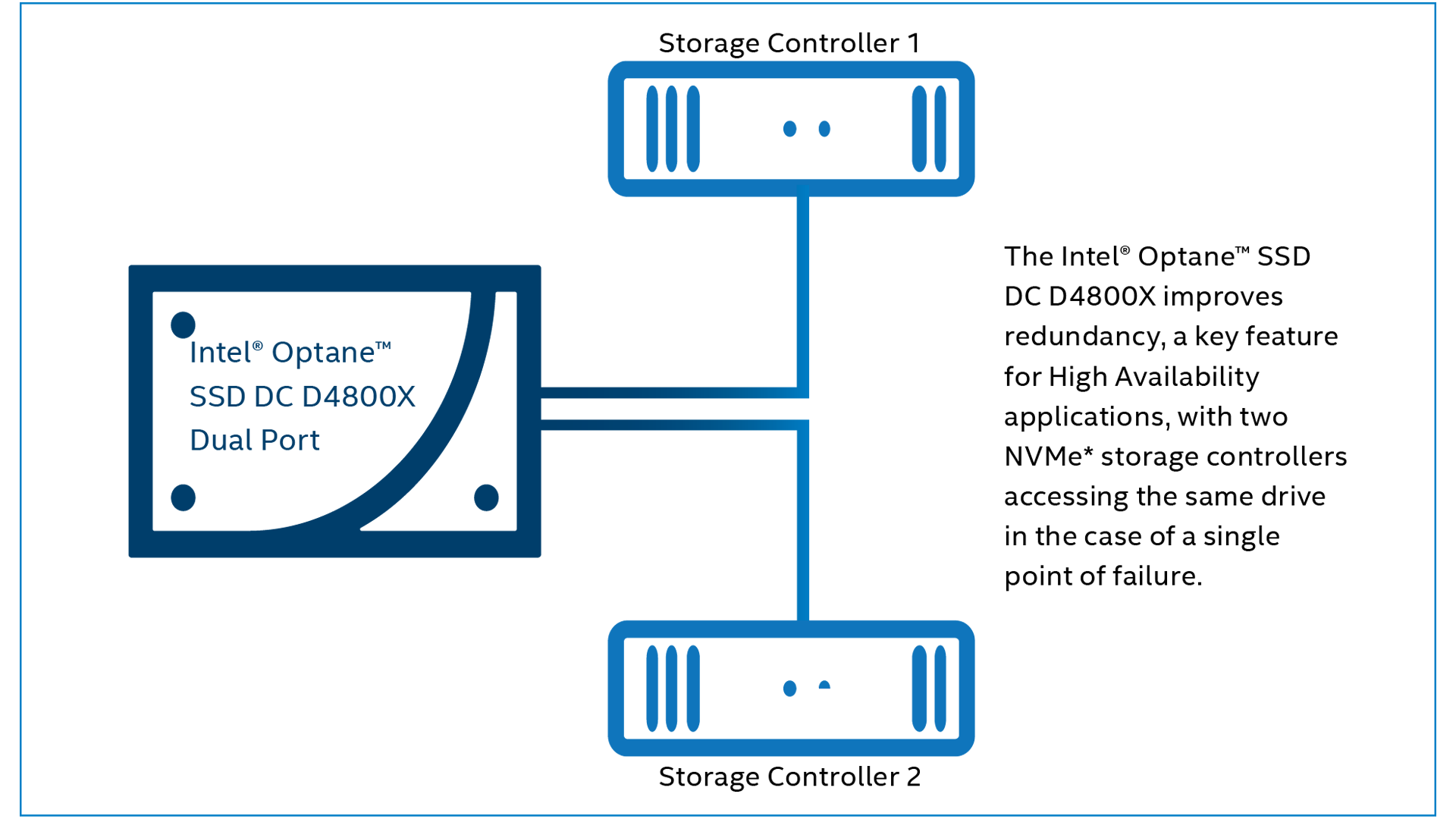Intel Announces New Optane and QLC Enterprise SSDs
Intel Announces New Optane and QLC Enterprise SSDs
Intel just unveiled their new data-centric solutions – the 2019 Intel Xeon Scalable processors, the Intel Xeon D-1600 processors, as well as the Intel Optane DC and Intel SSD D5 storage solutions.

Intel Optane SSD DC D4800X (Dual Port) combines the performance of Intel Optane DC SSDs with the data resilience required by mission-critical high-availability enterprise IT applications. The new Optane SSD DC D4800X differs from the existing P4800X by adding support for dual-port PCIe operation (for high availability) when attached through a PCIe fabric that provides redundant data paths. Most of Intel’s NAND-based enterprise NVMe SSDs have dual-port counterparts, but this is the early time this feature has shown up in the Optane product family.
Dual-port support is a relatively niche feature. Performance will be a bit constrained when using just one of the PCIe 3.0 x2 links, but most of Optane’s advantages in latency and random IO throughput will be retained. While the performance-oriented P4800X is available in both U.2 and add-in card mode factors, the dual-port capability only makes sense for the hot-swappable U.2 mode factor (and potentially EDSFF in the future).

Intel’s lineup of enterprise/datacenter SSDs that use four bit per cell QLC NAND flash memory is also expanding. The Intel SSD D5-P4326 (Intel QLC 3D NAND) is an addition to Intel’s first-to-market PCIe QLC NAND SSDs for the data center. Using 64-Layer QLC technology (4 bits/cell), the product family delivers large affordable capacities to read-intensive cloud workloads. Additional cost optimizations on the Intel SSD D5-P4326 enable it to help accelerate HDD displacement in warm storage.
The new SSD D5-P4326 comes in two capacities: 15.36TB and 30.72TB. Intel claims these are the early drives in production that comply with the EDSFF E1.L mode factor standard, derived from Intel’s earlier “Ruler” concept. The smaller 15.36TB capacity is also available in 2.5″ 15mm U.2 mode factor. Compared to Intel’s 7.68TB P4320, the larger P4326 drives have improved random look into and sequential write performance, while sequential look into performance is unchanged and steady-state random write speeds fall significantly to just 11k IOPS. But these drives offer the highest density in Intel SSD product line as well as a compelling performance advantage over mechanical hard drives.
But no matter how good they are the new Intel Optane and QLC Enterprise SSDs can experience logical and physical failures which will mean downtime for businesses. To get their irreplaceable data back, businesses will need to contact a reliable data recovery services provider. ACE Data Recovery team has a vast experience in highly complex projects and is the only company that develops its own in-house proprietary hardware and software specifically to recover SSD drives. ACEs will gladly help the new Intel Optane SSD DC D4800X and Intel SSD D5-P4326 (Intel QLC 3D NAND) owners with their data recovery needs.
